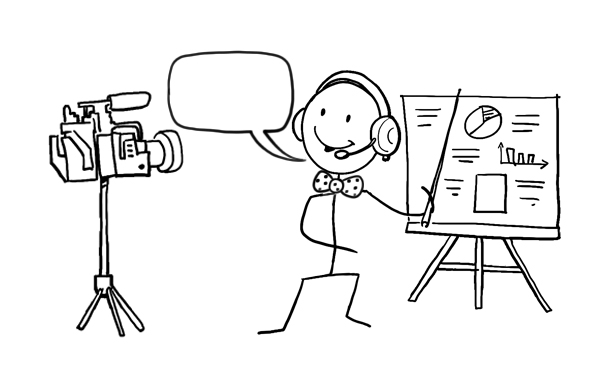
Engagement and Delivery Style
Engagement is how you capture your audience’s attention and create a sense of participation. If you can design your video with chapters and a playlist, then your students can actively engage with the learning material, with interactions such as pausing, forwarding, and rewinding. For example, ‘pause’ the video for a quiz or set a learning task. This may require rewinding to review sections of the video, or it may require ‘jumping’ to chapters to verify key points. Going back over material is an aspect of retrieval practice (learning scientists) Which will help improve recall. You may also point out links for further research. Students who feel actively engaged in this way will do better with retaining relevant information. For example, if students answer guided questions while watching a video, their retention of information is much better than students who passively watch the same video.
Use the segmenting principle, which suggests that learning is better broken up into smaller, bites-sized chunks. This technique can be used in conjunction with the chunking technique, where longer sections are broken down into shorter, more accessible, chapters. The ideal length of your video chunks will depend on your content; however shorter videos can be more effective (around twenty minutes). These shorter chunks of learning material provide the learner with more control over their learning, allowing navigation through the playlist and variable speeds of replay. Many students will speed up the video to reduce the pauses and slow play of normal play speed. Another thing you can do with the playlist is to mix it up so that the order is jumbled. This is the key to learning by Interleaving, another learning technique from the learning scientists.

Delivery style is another aspect of engagement. Everyone has their own unique delivery style, their own way of delivering teaching material, and their own way of engaging with an audience.
The most engaging videos tend to be those that have a natural, conversational delivery style. The emphasis is on natural delivery style – Keep it fluid, with natural changes of intonation. Use natural pause points between topics in your delivery – pauses are useful for editing and provide a place to seamlessly insert cuts and transitions. Of course, natural speech is not perfect, it is full of minor blunders, hesitations, and repetitions. However, these are features of conversation and part of its appeal. Natural speech makes a connection with your audience. Your authentic delivery will be appreciated. If a mistake needs to be corrected, keep recording and ‘retake’ that line or sentence – then fix at the editing stage.
Quote from Professor Iain Gillespie, Principal and Vice-chancellor
‘Probably the best lesson I ever learned was with a media trainer some years ago pointing out some of Bill Clinton’s tricks. He was the master at making expressive gesticulations with just his fingers at around chin level – so they were always captured even with a camera head shot. That’s harder with one hand holding a camera, but just about doable!’
Otherwise:
- Decent light
- Don’t move the phone around too much but its ok if it wiggles a bit
- Speak normally, with normal intonation
- Smile sometimes … you have to do it deliberately!
- Vary your tone and pace – don’t rush at it
- Don’t worry if you stumble over the odd word – it’s perfectly normal!
- Try not to be too self- conscious about what you have just said. Only you know if you have to repeat it!
- Have fun
Another aspect of delivery style is the design choices you make for your video. These includes all the visual elements, the title slides, background colours, illustration style, and in some cases even the transitions used. These visual elements will help to set the tone of the video and can make the teaching material more engaging. However, keep it simple and keep in mind the design principle of reducing the cognitive load, which will help you focus on design that aids learning.

Quick tips
- Actively engage your audience with guided questions
- Use natural pause points
- Keep it fluid, with natural intonation
References
Mayer, R. E. (2009). Multimedia learning (2nd ed.). Cambridge, England: Cambridge University Press.
source
https://ctl.wiley.com/principles-of-multimedia-learning/

